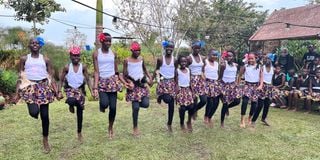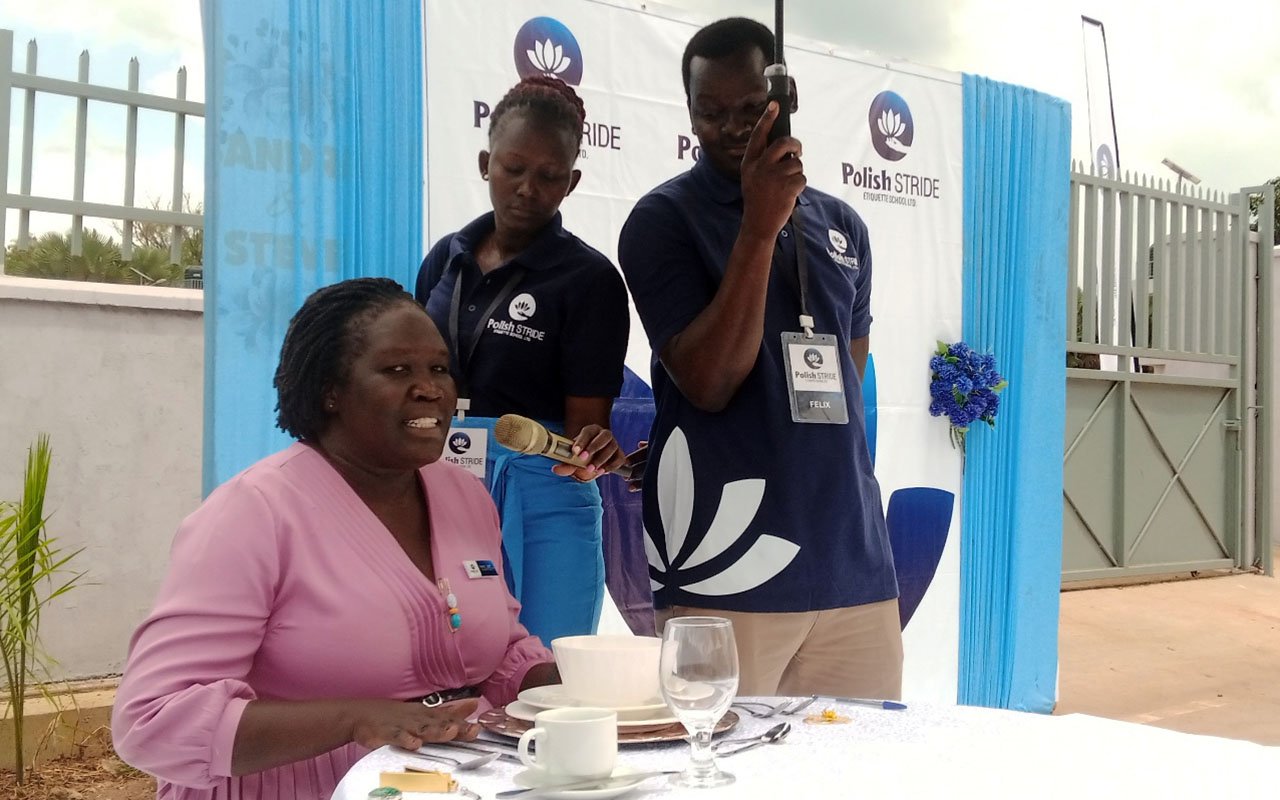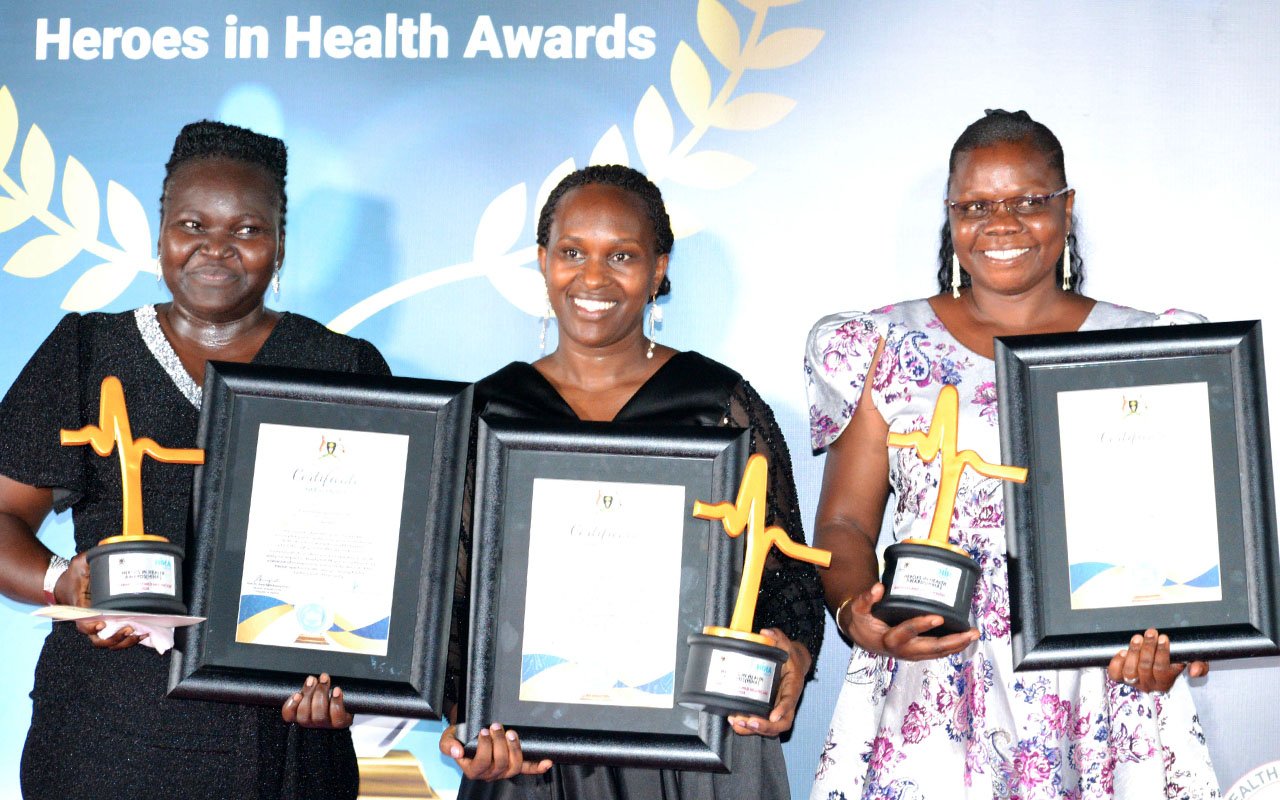Ugandan kids make history with first Irish dancing fete in Africa

Students from the Victoria Montessori in Entebbe doing a reel during Féis Fusion in Kampala, Uganda, at the weekend. 30 children stepped it out to perform jigs and reels – with a unique African twist – for the fun event. PHOTO/MIRIAM DONOHOE
What you need to know:
- Irish dancing is currently being taught to 112 boys and girls in three schools in Kampala. Two schools, Hands for Hope in Kampala and The Early Learning School in Entebbe to support the most vulnerable children ensuring they receive an education.
Talented young dancers from Kampala made history at the weekend when they performed in the first-ever Irish dancing féis (competition) to be staged in Africa.
Children from schools in Entebbe and Kampala took part in the event, called Féis Fusion, which was part of a wider Irish culture programme started in Uganda by Irish man John Walsh, and his Ugandan wife, Deborah.
The programme aims at giving Ugandan children from under-resourced schools quality dance, sports and music lessons.
Irish dancing is currently being taught to 112 boys and girls in three schools in Kampala. Two schools, Hands for Hope in Kampala and The Early Learning School in Entebbe to support the most vulnerable children ensuring they receive an education.
At the weekend, an enthusiastic crowd of Ugandans and Irish gathered at Yellow Haven Resort on Lake Victoria in Kampala for Féis Fusion, with participants kitted out in colourful African-themed costumes and dancing barefoot.
There was great excitement among the youngsters who took part. Bernice Alengo, 11, from Victoria Montessori School in Entebbe, said she started learning Irish dancing three months ago and loves it. “My favourite Irish dance is the first-hand reel, and I have been practising this hard all week.”
Bokhisio Elisha, 12, from the Early Learning School in Entebbe, said dancing is great fun, but difficult if you do not concentrate. “I would love to be a famous Irish dancer someday and to perform all over the world,” he said.
For Kevin Nyarubwa, 15, from the Hands for Hope School in Kampala, the challenge is not to shake her bum and move her hands when dancing. “In African dance, you move your body more, while in Irish dance you smile, look ahead and keep straight. Sometimes I can’t help bringing some African moves in!”
Professional Irish dancer Jean Kennedy - who performs with the world-famous Lord of the Dance group - provided coaching to the children through videos which she posted on YouTube.
She said when she was contacted by Mr Walsh and asked to support children in Uganda with online Irish dancing lessons, she did not hesitate.
“I did a training video every month which I uploaded on YouTube. I knew that all the children would not be able to access YouTube, but that the dance teacher in Uganda Mohammad Ssegawa would pass on the skills. He sent me regular videos from dance classes, and I was able to give feedback on weekly Whatsapp calls.”
She added: “I am amazed at the kids. Their determination and focus is inspiring and they are so talented. They don’t have all the distractions that Irish kids have with smartphones and lots of activities and sports after school, so they give this their all. “
Ms Kennedy said she loved the African twist, which the kids have included in Irish dance. “With Irish dance you have to keep your legs crossed, your feet turned out and you dance on your toes. But every so often the kids would bring their feet out to the side. Irish dancing also demands having a rigid upper body, but the Ugandan kids can’t help moving their hips and their bodies at times, as African people do! But the fusion of Irish and African dance is fantastic!”
Thanks to her experience with the Ugandan children, Ms Kennedy has set up a JigJoy YouTube channel, giving children anywhere free access to Irish dancing lessons. “The aim is to spread the joy of the jig to those who need it most,” she said.
Ms Kennedy has also collected 50 pairs of second-hand Irish dancing shoes in Ireland, which are currently being shipped to Uganda for the young dancing students.
Mr Walsh, who works as a hotel manager in Entebbe, recently told Daily Monitor that it has been a pure joy to see the children develop their Irish dancing skills and have huge fun at the same time.
“To my knowledge, there has never been a dancer from Africa in Riverdance or Lord of the Dance, even though 1.2 billion people live on the continent. My dream is to change this by the end of the decade and to see some of these kids go on to become professional dancers on the world stage.”
He said he is looking to link up with other schools and the goal is to have a group of Ugandan Irish dancers travel to Ireland in 2026 to perform.
“We have a fourth school that will join the dance programme at the end of September and the goal is to continue expanding to many more schools and to have children perform during the St Patrick’s Day activities in Kampala next year.”
The cost per school of the dance training is around Shs240,000 per month, and this is currently covered by Paddy O’Gandas Irish Bar in Entebbe and Mr Daniel Reid, an Irish man with strong ties to Uganda. There has also been huge support from the Irish Society and the Irish Ambassador, Kevin Colgan and others.
People who are interested are advised to follow Irish Dancing in Uganda on Instagram @irishdancing.ug and @UgandaEireDance on X, formerly Twitter.




